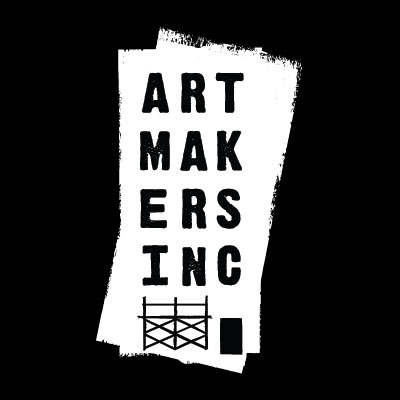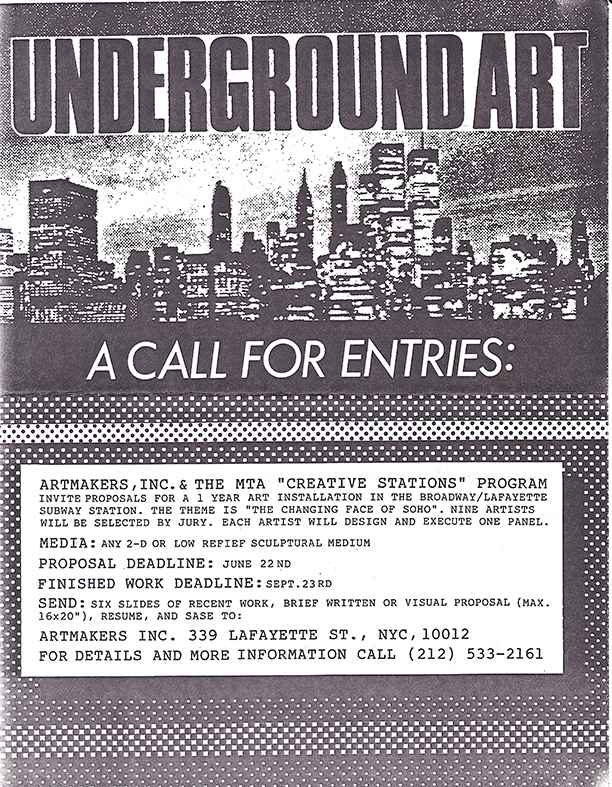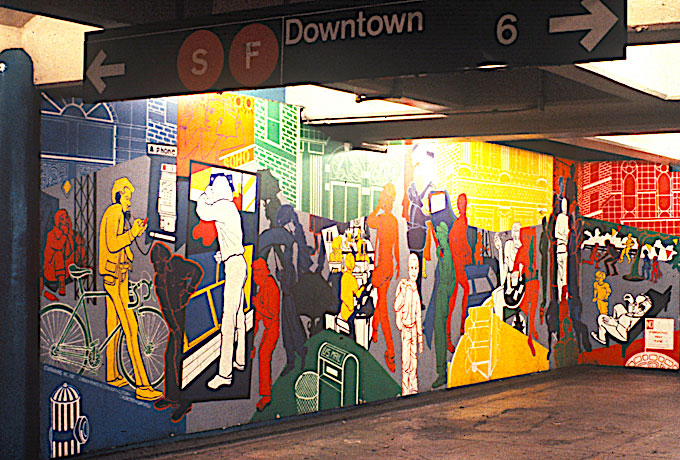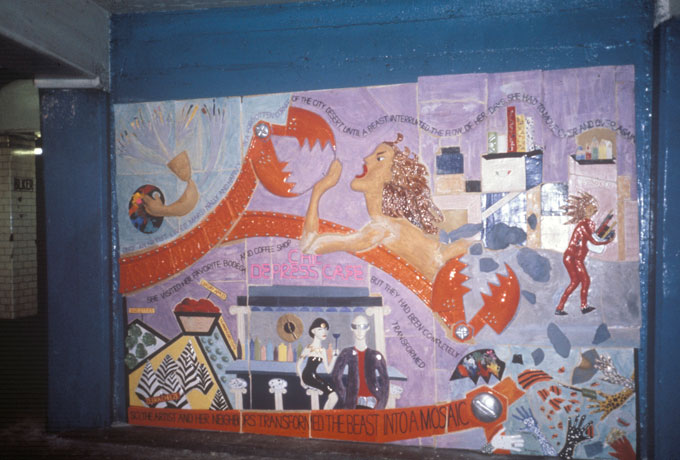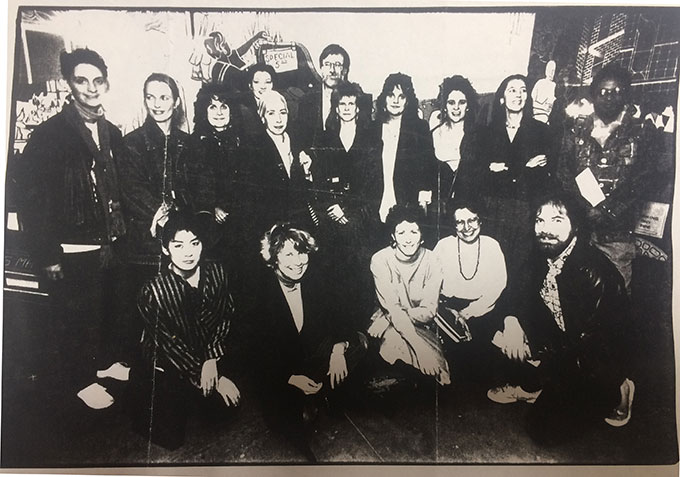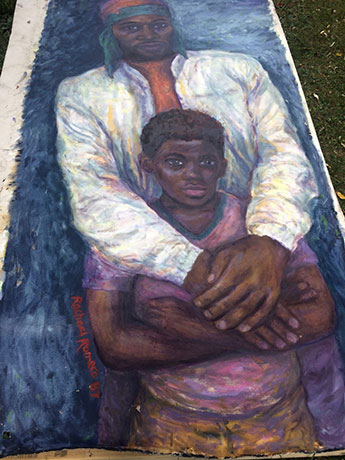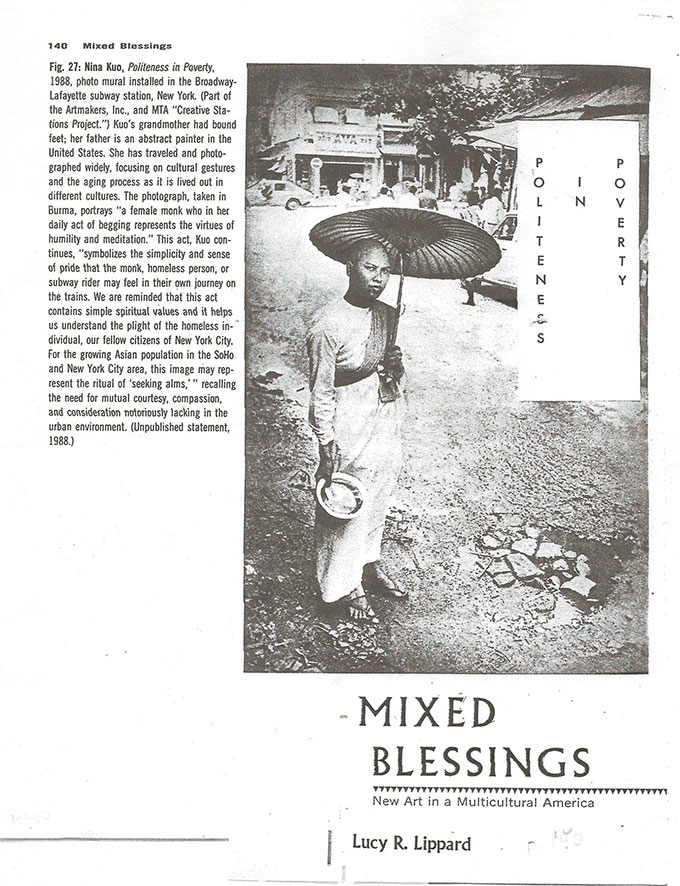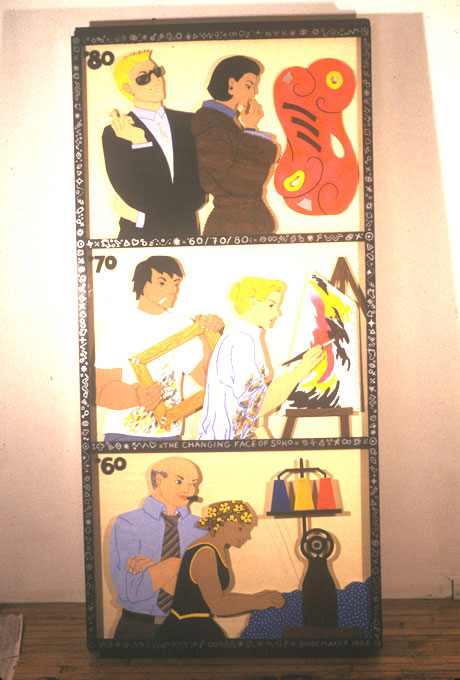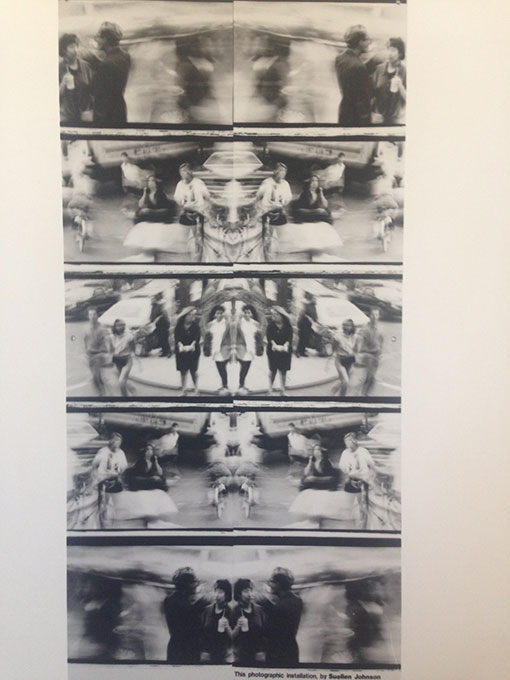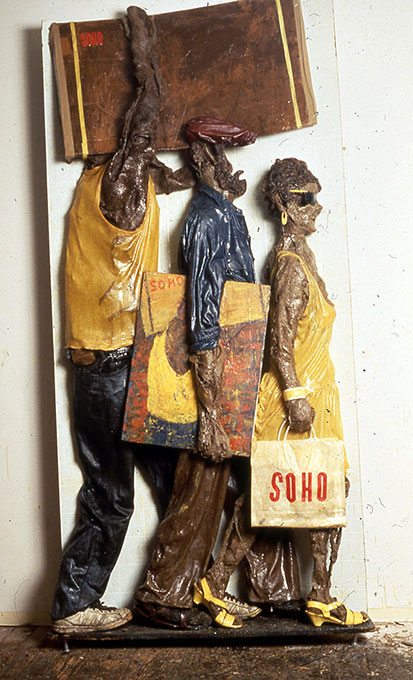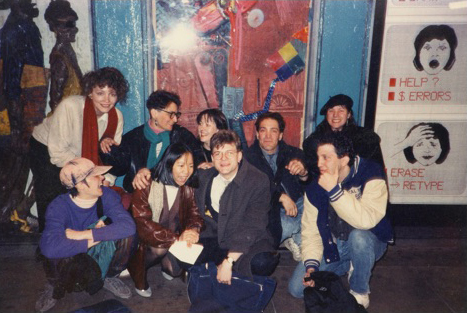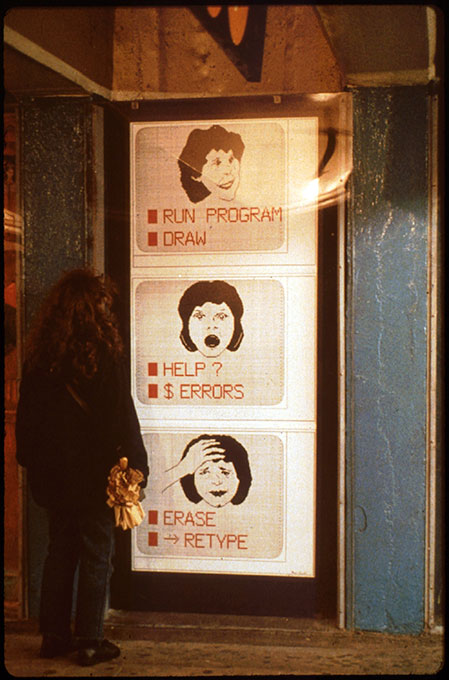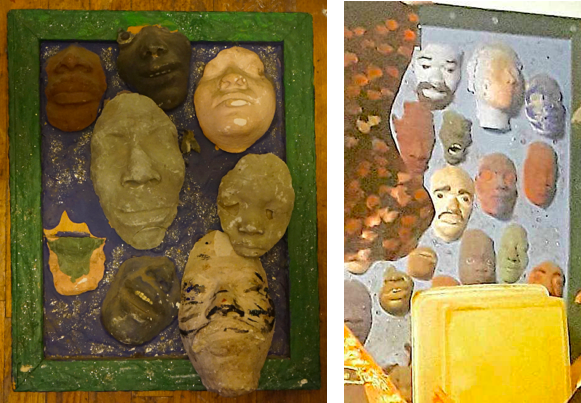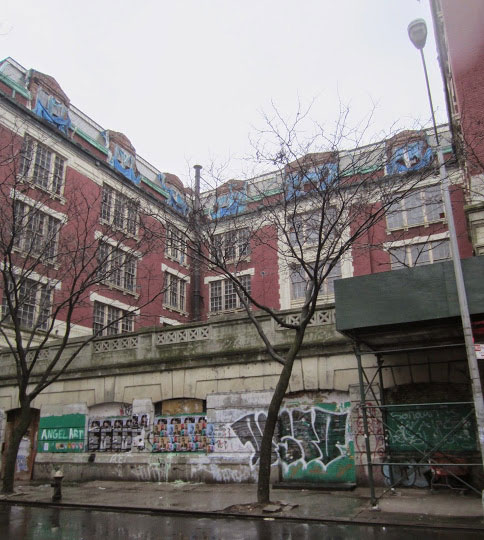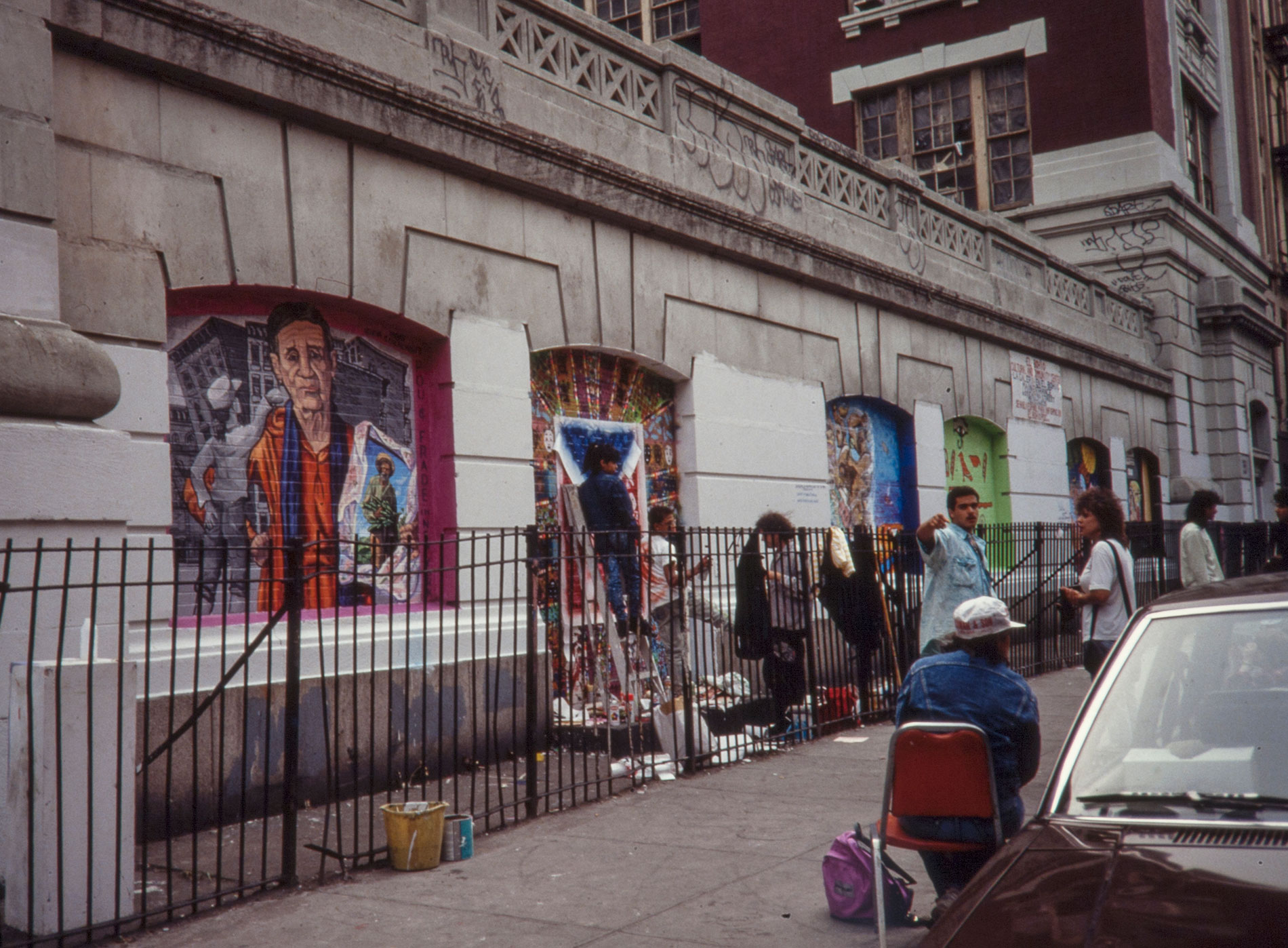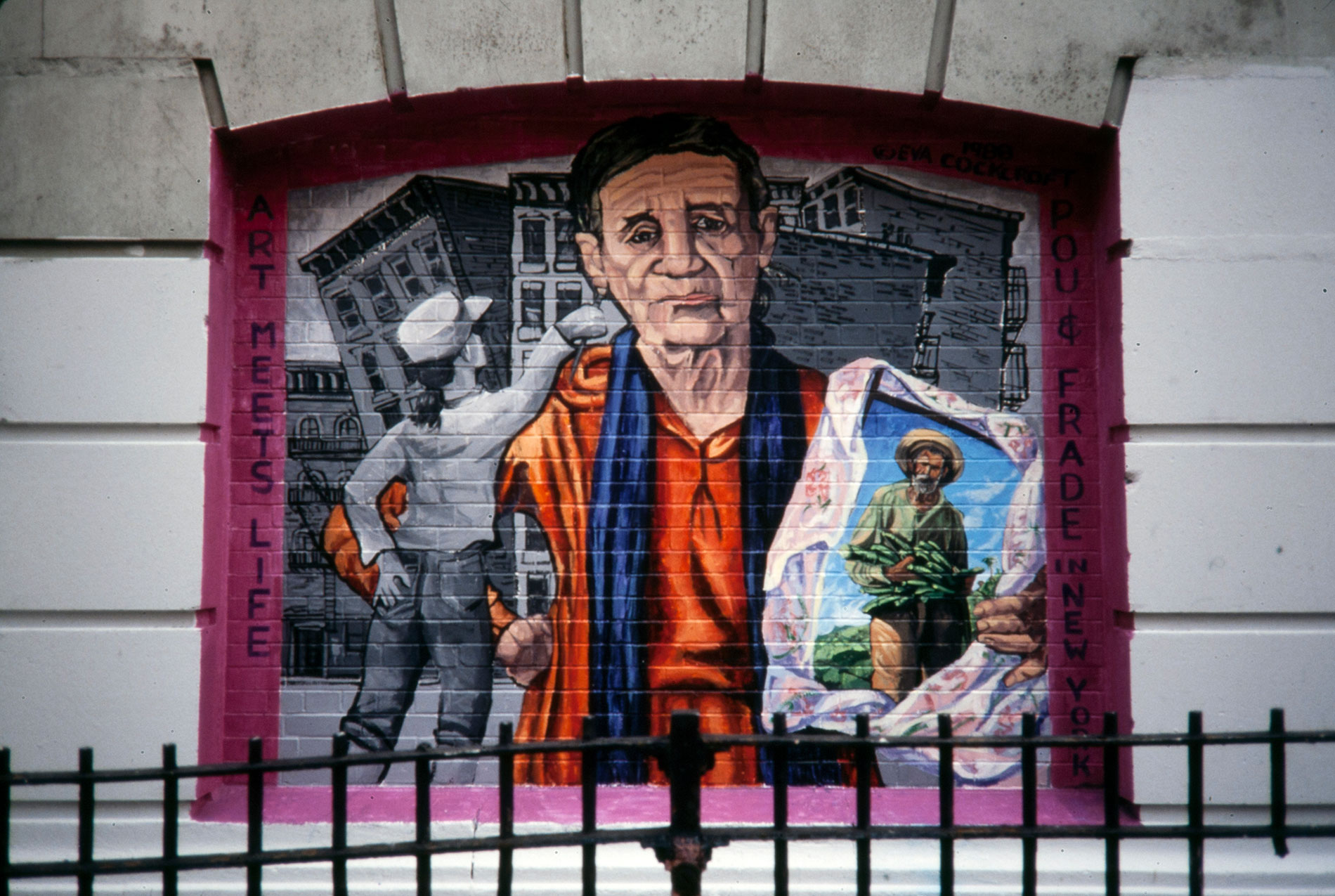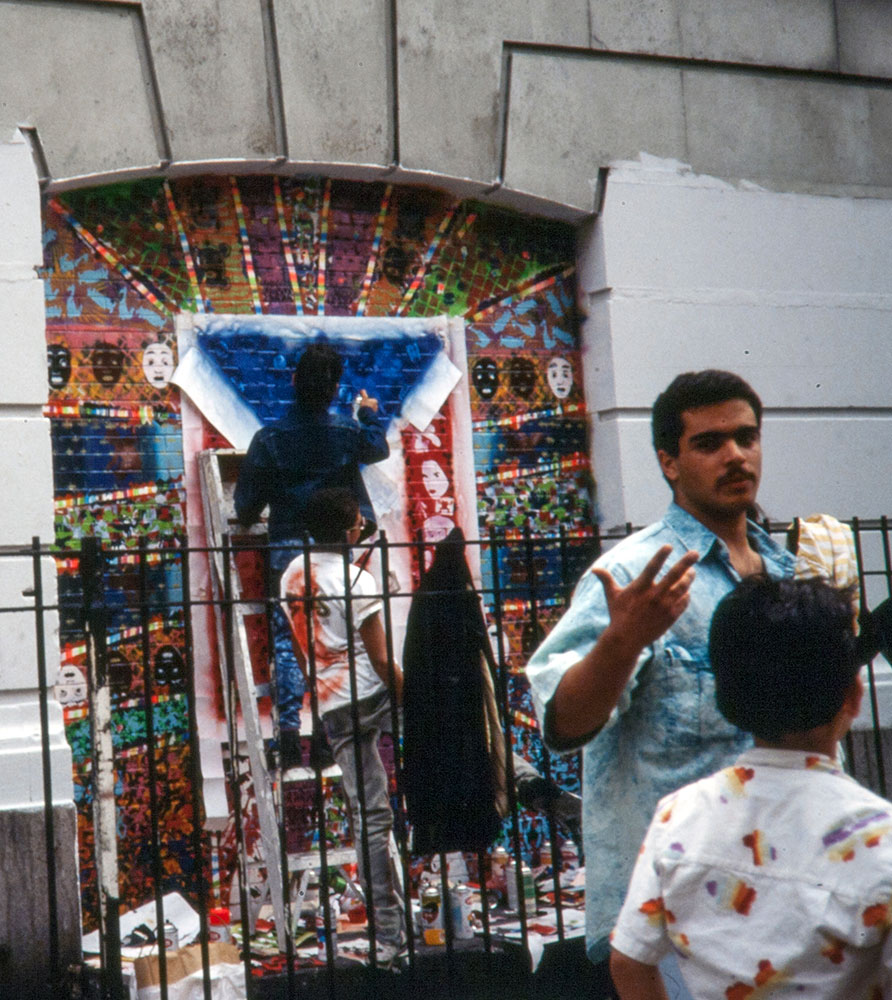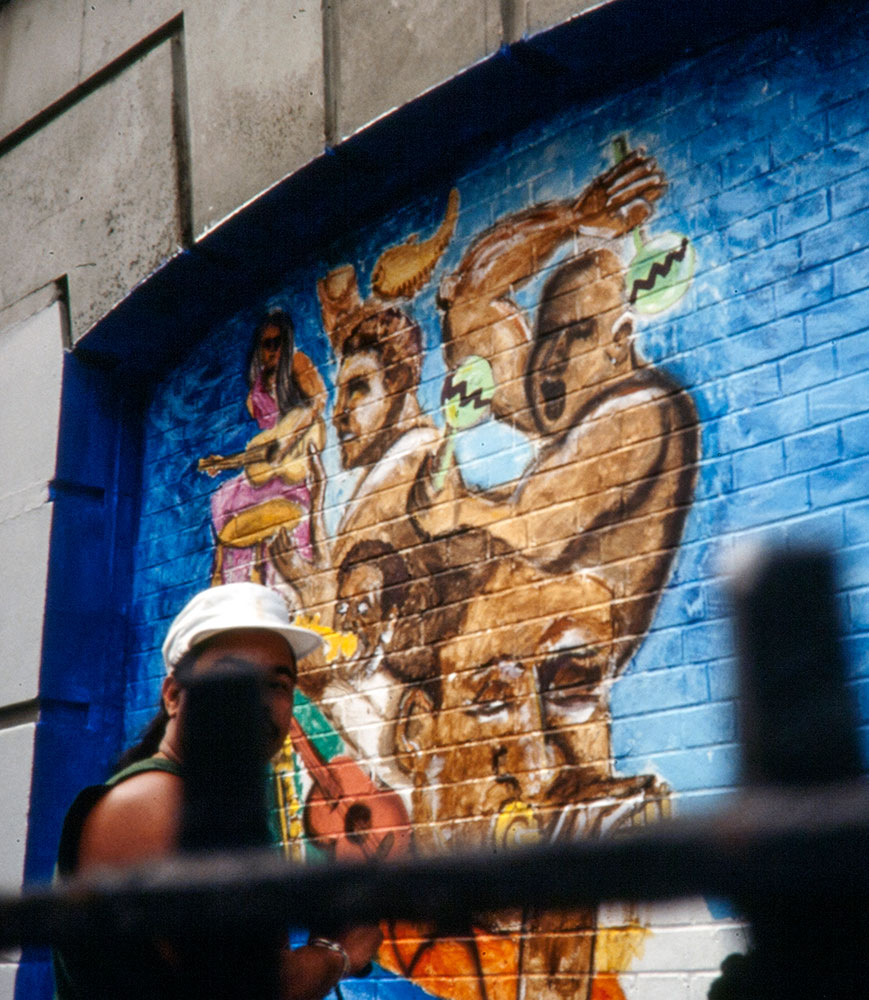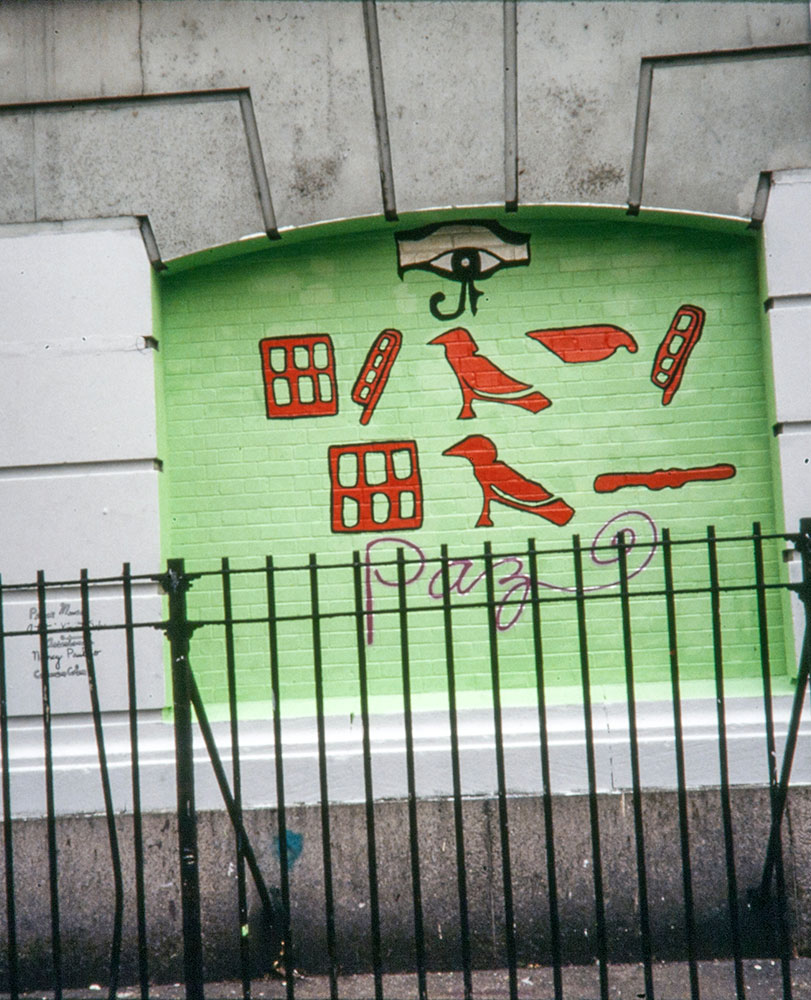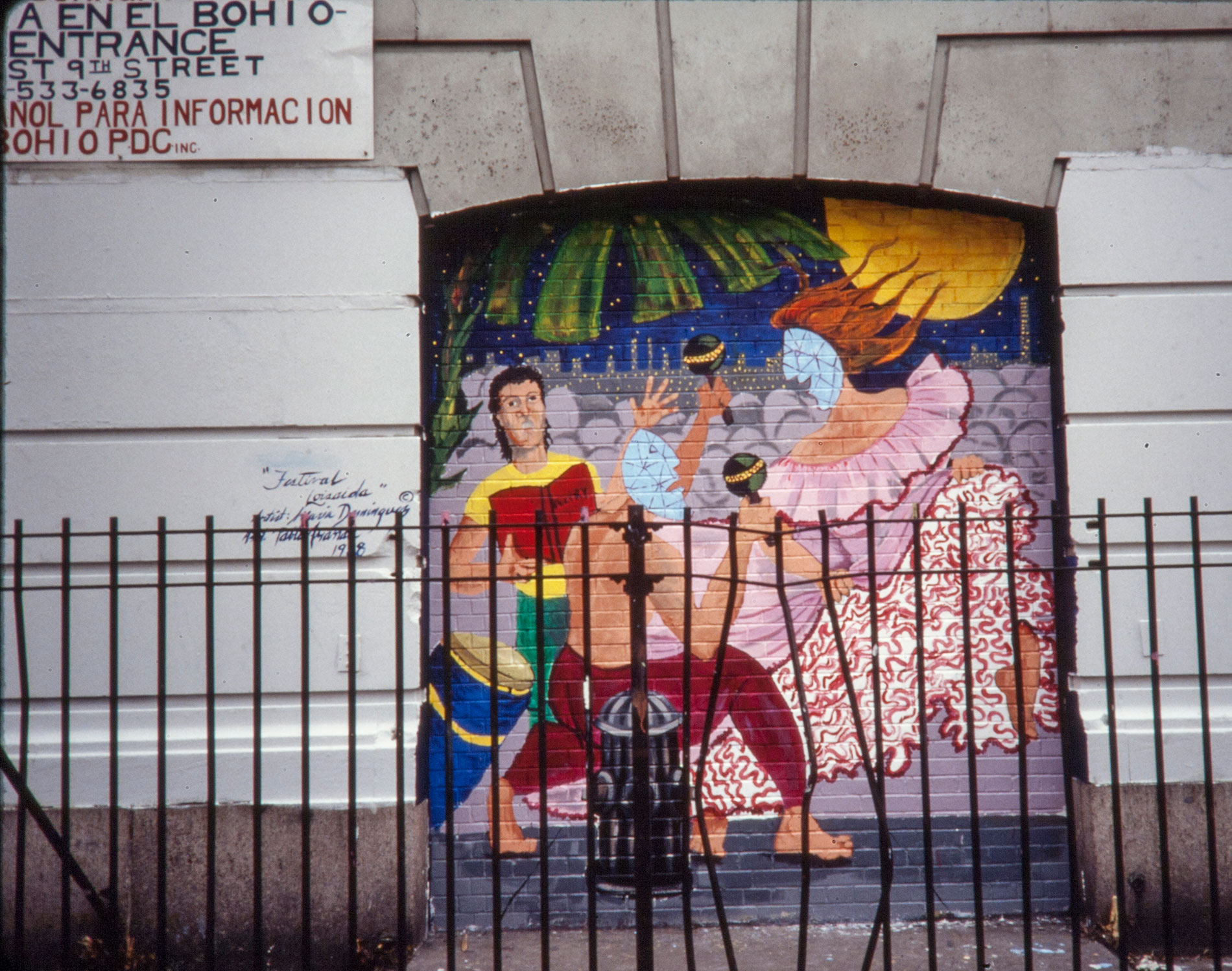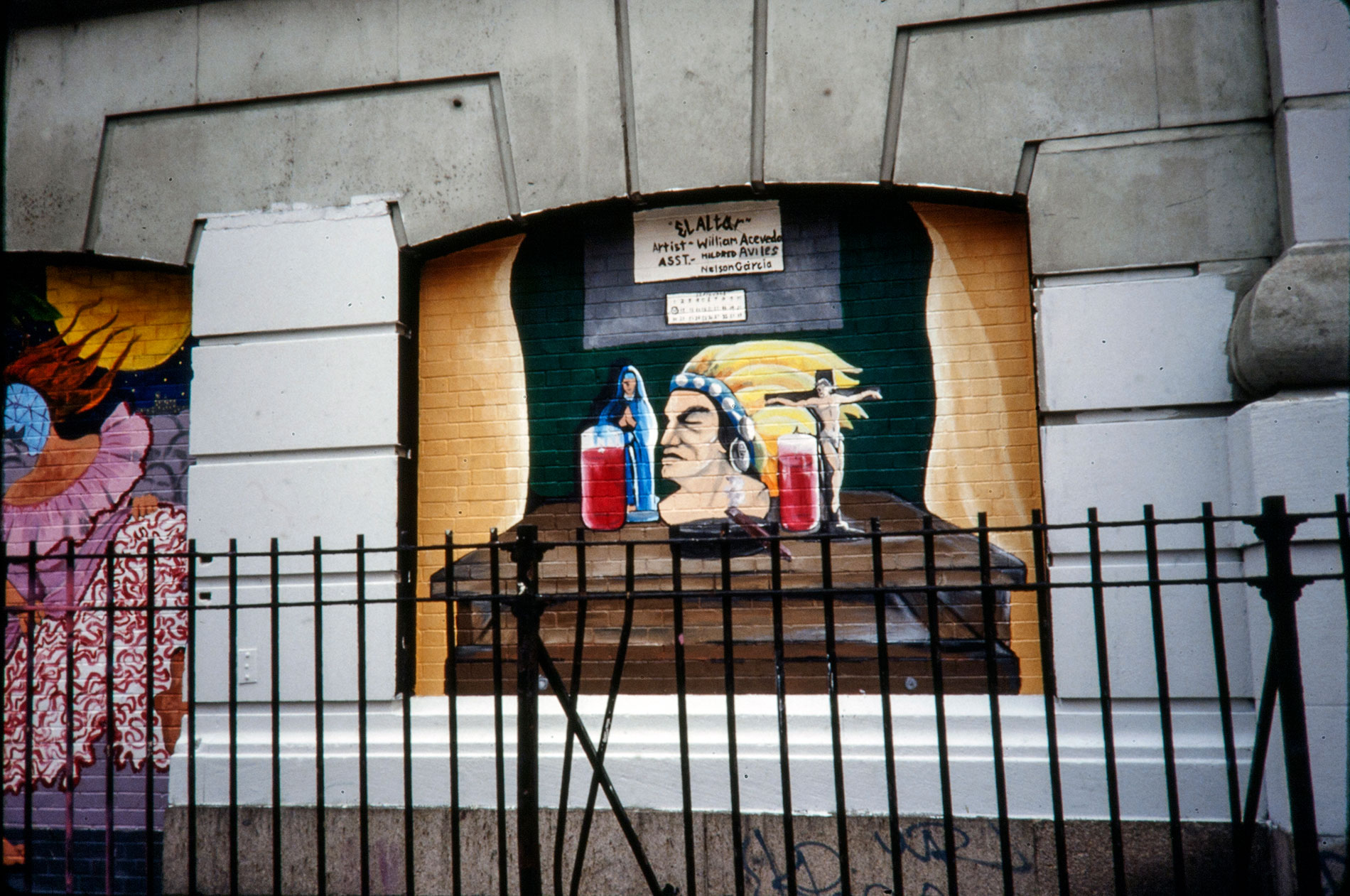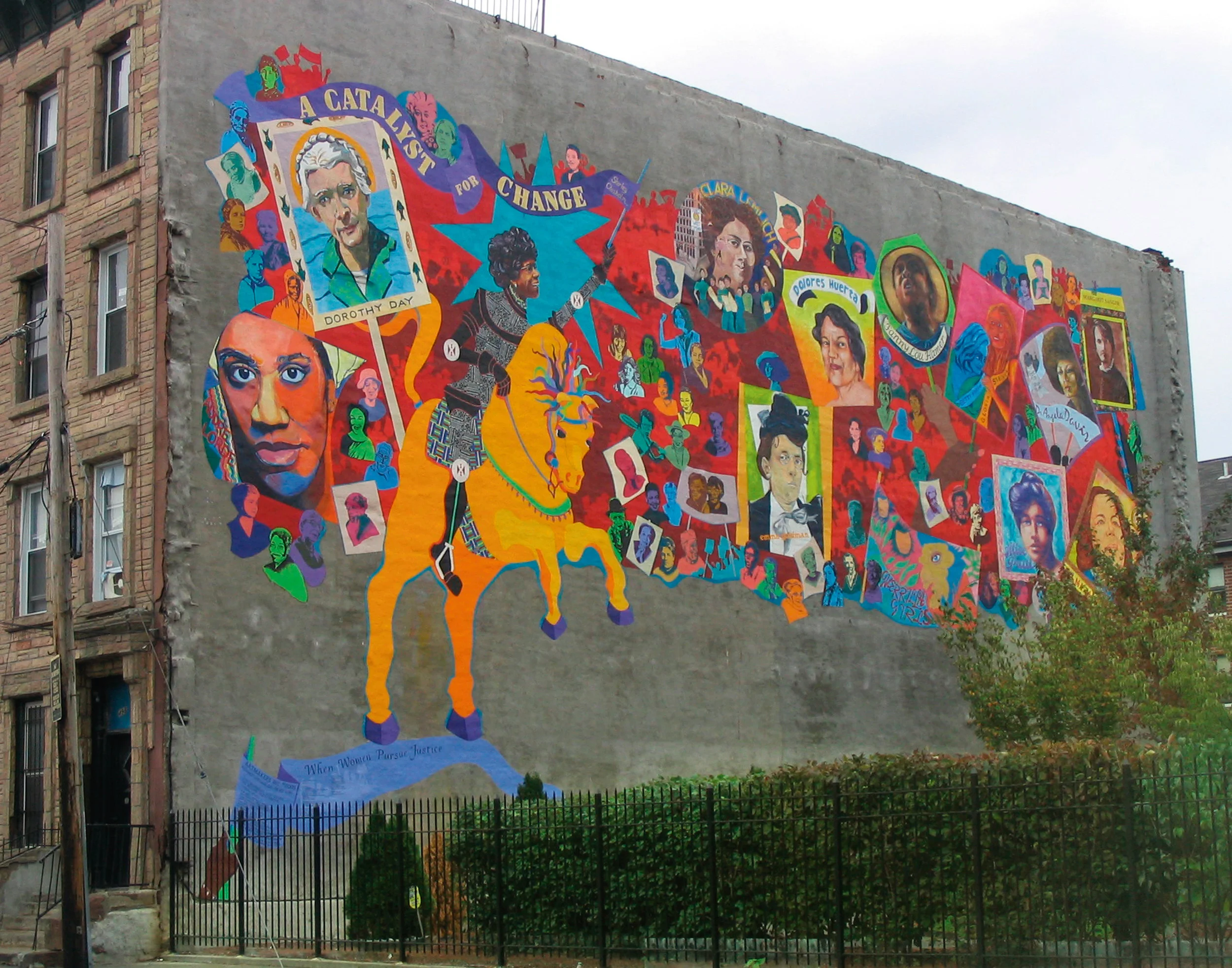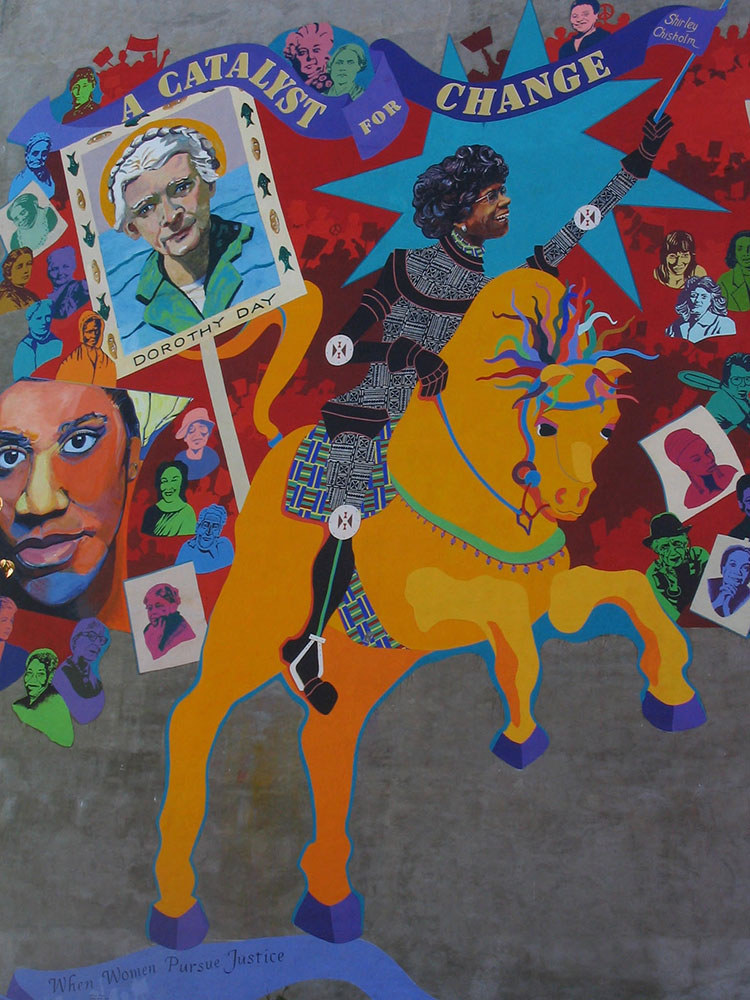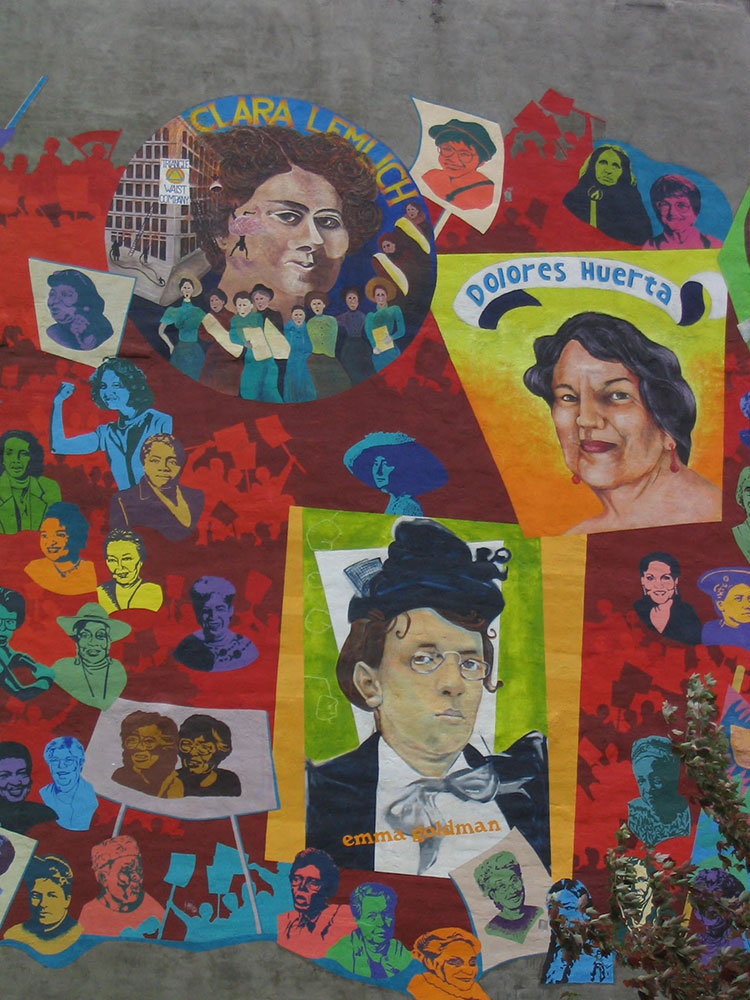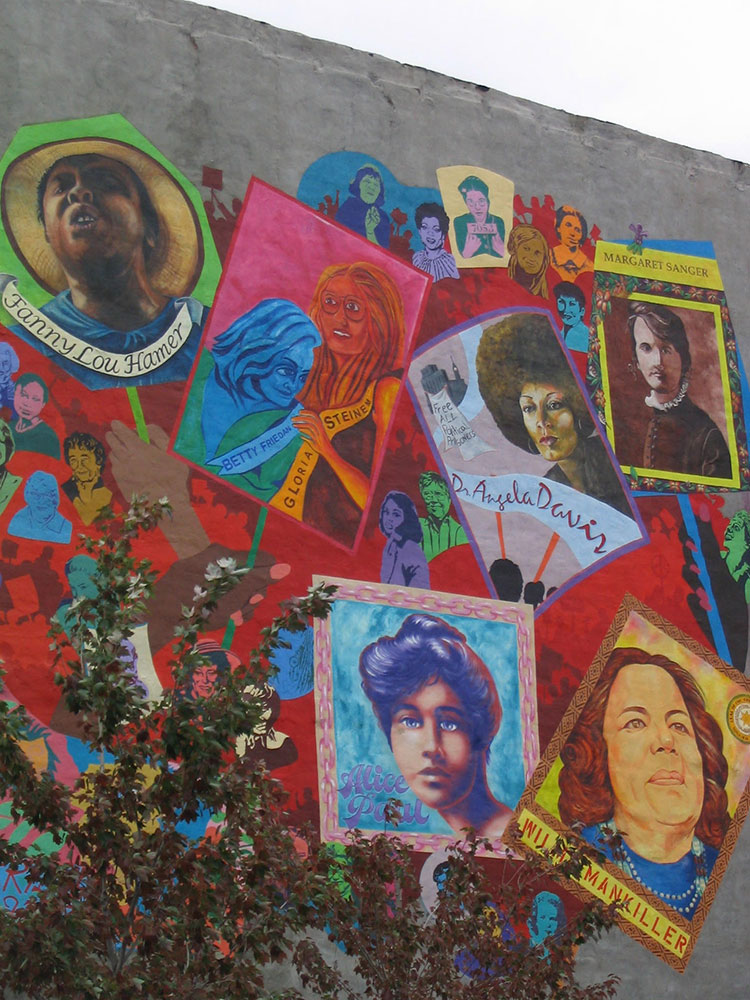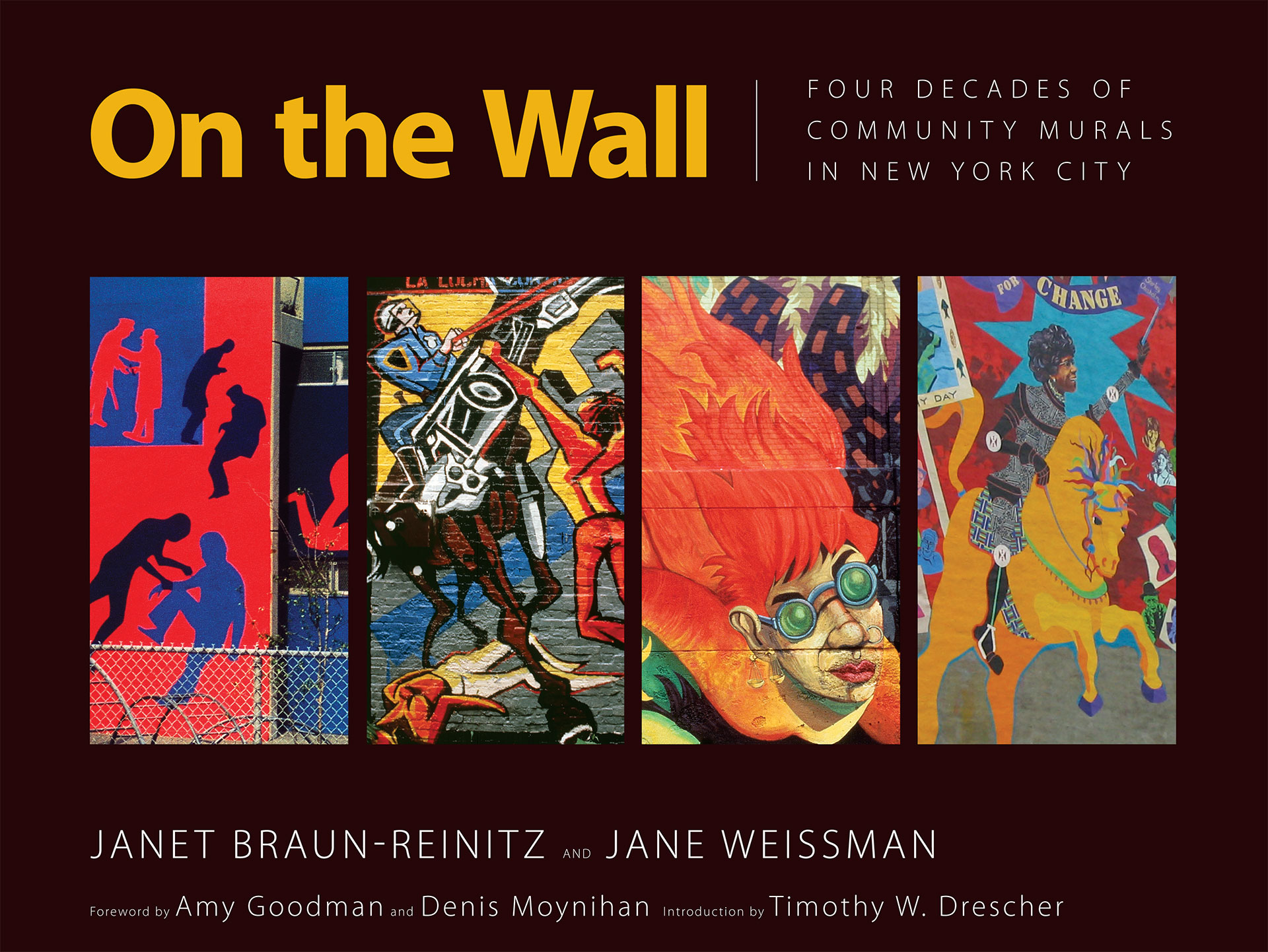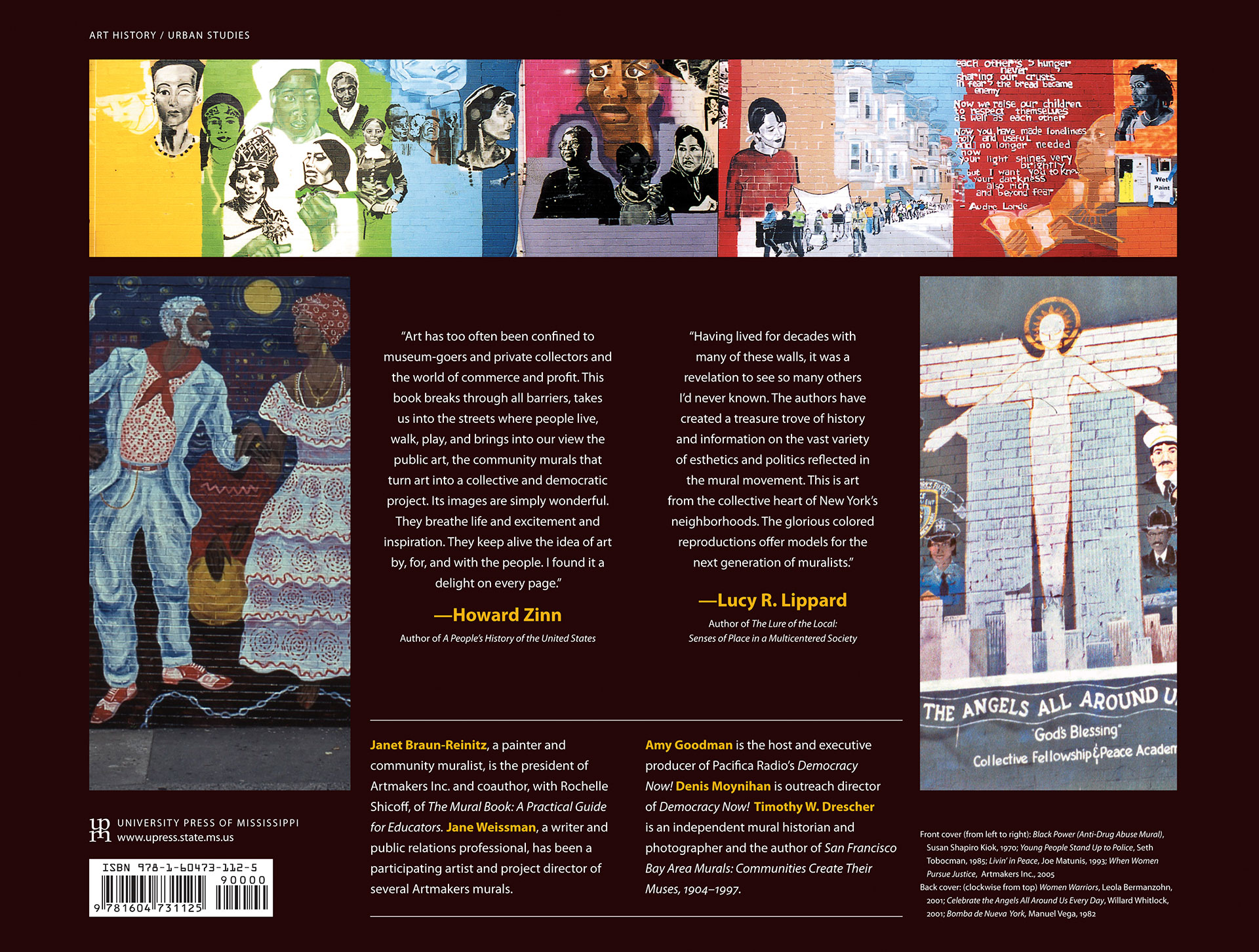Talk Flyer
Courtesy of Rikki Asher
La Lucha Continua The Struggle Continues was the catalyst for other Artmakers collaborations as well as individual projects by La Lucha artists. It also inspired an equally grand project by another artist.
La Lucha was Kristin Reed’s “first experience doing community murals and I went on to do many more afterward, including a second collaboration with Robin Michals—Enchanted Garden Mural (1986) a few blocks away on East 4th Street. We had another priceless Artmakers experience where the connections and friends we made during La Lucha served as invaluable connections and friends for our safety and productivity. Meeting Eva [Cockcroft] and becoming involved with Artmakers changed my life in so many ways.”
Enchanted Garden Mural
Photo © Kristin Reed
Dina Bursztyn had a similar experience: “La Lucha introduced me to street/community/public art and, in the process, I made new friends. It also sparked many other projects including Gargoyles to Scare the Developers (1987, 1988). The 29 bas reliefs installed on buildings throughout Loisaida were viewed as protectors of the community. They declared that these buildings and their residents were not for sale.”
Gargoyles to Scare the Developers
Photo © Dina Bursztyn
Following the La Lucha model, Artmakers issued a call for proposals for an installation in the Bleecker/Broadway Lafayette subway station, a project sponsored by the Metropolitan Transit Authority Arts for Transit program. Six La Lucha alumnae—Eva Cockcroft, Kristin Reed, Karin Batten, Thérèse Bimka, Dina Bursztyn and Camille Perrottet—were among the 19 artists who created the collective brush and ceramic murals as well as the nine individual pieces that made up The Changing Face of Soho (1988).
That same year, La Lucha muralist Maria Dominguez directed a six-mural cluster at El Bohio, the community center run by CHARAS. She and Eva Cockcroft were among the artists who, in their individual styles, painted murals in the building’s recessed panels, all speaking to the Loisaida experience.
La Lucha Continua covered 26 walls, offering 6,645 square feet of powerful imagery. In 1988, Mike Alewitz began Pathfinder Mural in Manhattan’s West Village—a two-year project that, at 6,715 square feet, was hailed as “one of the largest political murals in the world.” Gathering 80 artists from 20 countries—including La Lucha alumni Eva Cockcroft and Keith Christensen—the mural presented a history of the international labor movement and national liberation struggles whose leaders were honored by individual portraits issuing from a large red printing press.
Mike Alewitz, Pathfinder Mural
Photo © Estate of Eva Cockcroft
Pathfinder’s printing press, in turn, inspired the 35’ tall image of Shirley Chisholm astride a golden steed that anchors Artmakers’ When Women Pursue Justice (2005). Directed by Janet Braun-Reinitz, 12 principal artists (including La Lucha’s Rikki Asher, Maria Dominguez, and Kristin Reed), five interns, and 30 volunteers painted the 45’ x 72’ mural that celebrates 90 women who, risking life and liberty, worked for social change in the United States from the mid-19th century to the present day. At the top, a portrait of Eva Cockcroft—based on a photograph of her working on La Lucha Continua The Struggle Continues—is rendered a little bigger than all the others.
So completes the circle that begins with the PLACA murals in San Francisco’s Balmy Alley, works its way to La Lucha Continua The Struggle Continues and Pathfinder Mural, and ends with When Women Pursue Justice.
When Women Pursue Justice was three years in the making—organizing, raising funds, painting, presenting three distinct exhibitions, and publishing a companion booklet. During this time and in the years prior and following, Janet Braun-Reinitz and WWPJ project director Jane Weissman were researching and writing On the Wall: Four Decades of Community Murals in New York City (2009, University Press of Mississippi). A cultural history, it documents the murals and the stories behind them, preserving the richness and variety of New York’s murals that, over time, have and continue to disappear.
